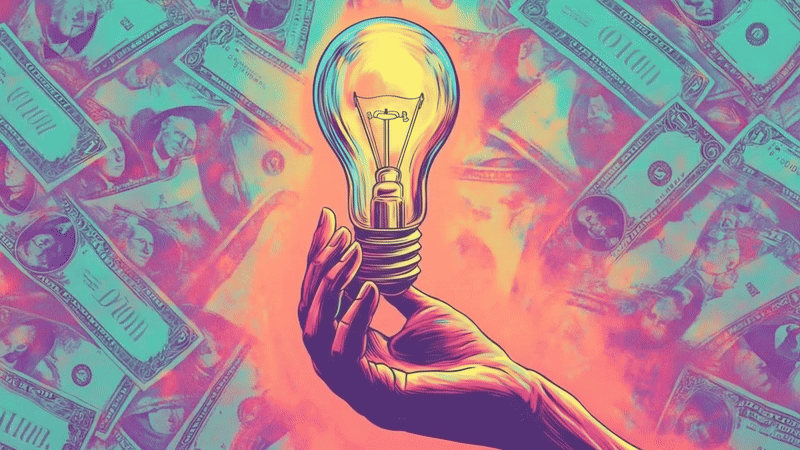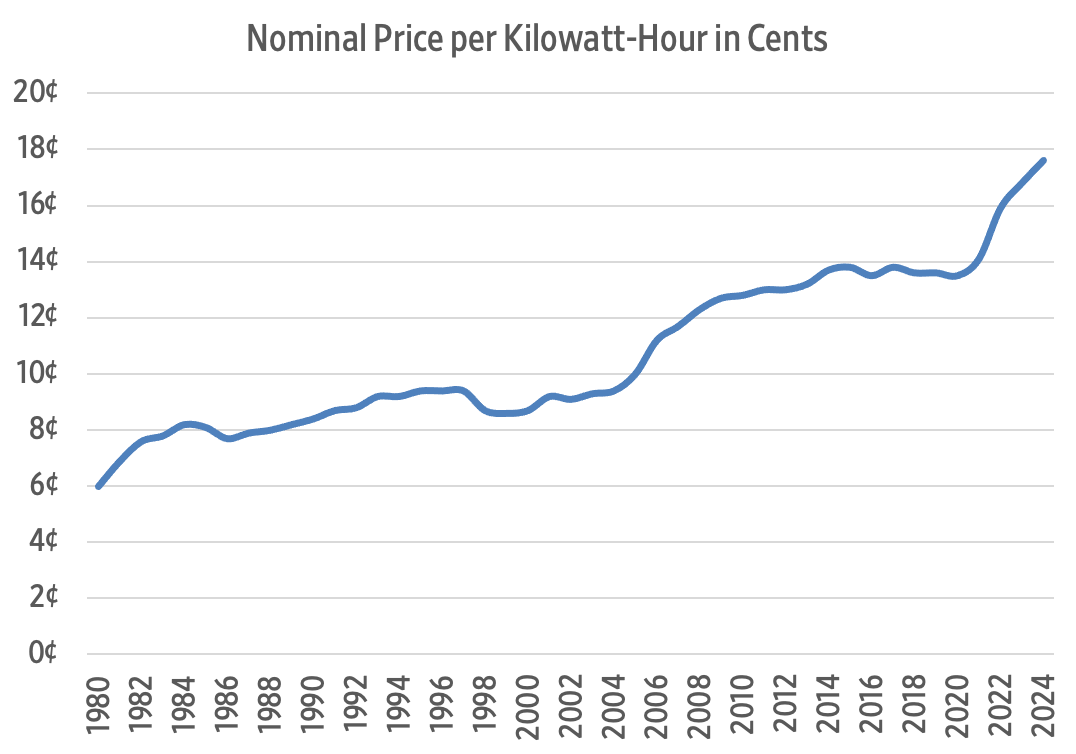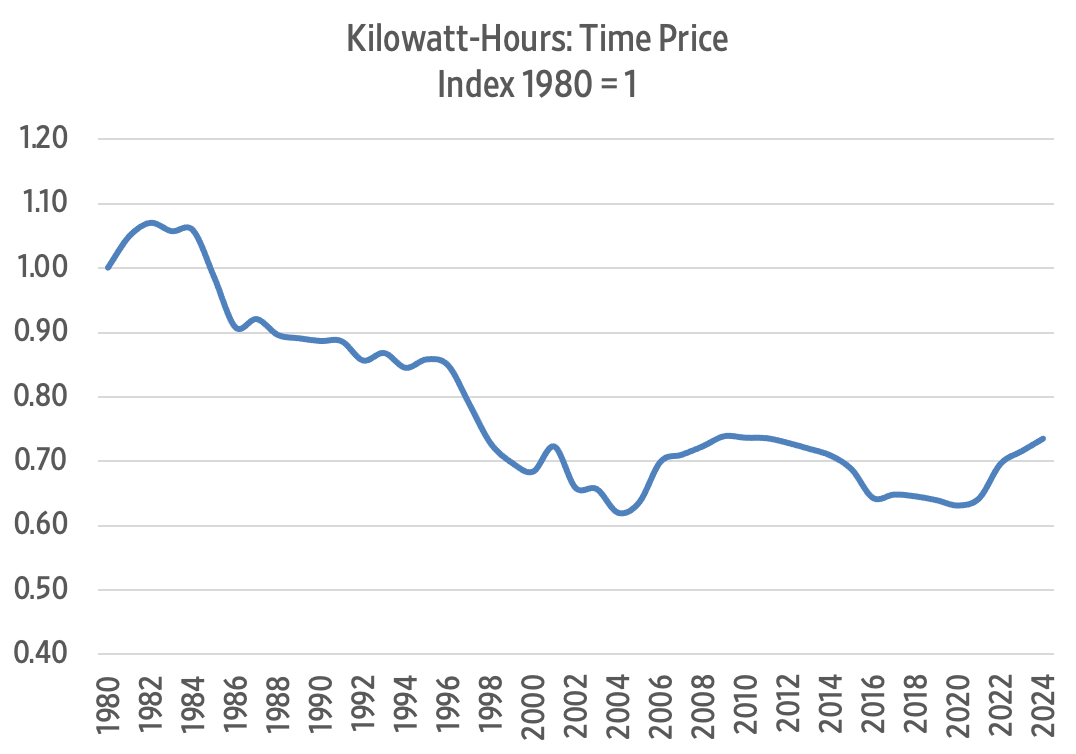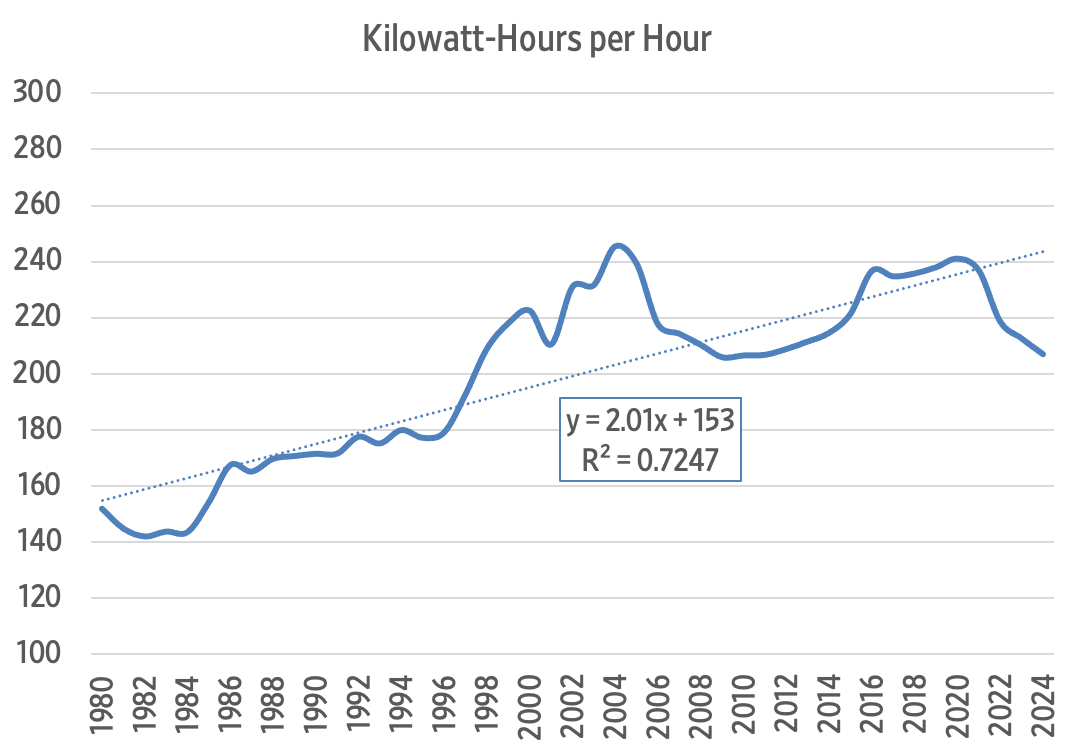The Declining Time Price of Kilowatt-Hours
We're getting more energy for less time.
Energy is essential to creating abundance. Whether it’s used to organize and move atoms or to store and transmit information, economic development depends on energy. Although energy is available in many forms and measured in various units, the kilowatt-hour (kWh) is a common standard of comparison, especially in electricity-related contexts. A kWh represents the energy delivered by one kilowatt of power sustained over one hour. For perspective, a standard 42-gallon barrel of crude oil contains approximately 1,700 kWh of energy, though the exact amount depends on the oil’s grade.
The US Bureau of Labor Statistics (BLS) tracks average electricity prices over time in nominal terms. The chart below shows the U.S. average price per kWh from 1980 to the present—rising from about 6 cents per kWh in 1980 to 17.6 cents today.
To convert the money price into a time price, we compared the US blue-collar hourly compensation rate for each year, indexing 1980 as the baseline (1.0). The result shows that the time required to purchase a kWh of electricity has declined by 26.6 percent since 1980.
Another way to understand electricity prices is to ask: how many kWh can you buy with one hour of work? This chart illustrates that relationship. In 1980, an hour of US blue-collar labor could buy 152 kWh; today, it buys 207 kWh—a 36 percent increase in energy abundance.
The regression line plotted on the chart suggests a steady gain of about two additional kWh per year for the same amount of work. Although time prices have spiked in the past three years, the long-term trend still indicates growing abundance..
If you started your first job as an unskilled worker in 1980 and “upskilled” to a blue-collar job by 2024, your time price for electricity would have dropped by 67.3 percent. For the time it took to earn enough to buy 100 kWh in 1980, you could now purchase 306 kWh—representing a 206 percent increase in electricity abundance.






Can you redo this same analysis with a sense of the multiplier effect of energy efficiency of the equipment we use, from light bulbs to ac equipment to appliances to heat pump water heaters? When you add this multiplier to the time price, the time price savings of useful energy explodes.
I like it, but do the harder arithmetic on a water heater that today costs more than five times an electric resistance unit. Is the 4x more efficient production of hot water (the juice) worth the squeeze (unit costs five times as much and is more complicated to install and maintain.). I agree, most examples are like the microwave, cheaper to make, cheaper to install and far, far more energy efficient. But worth contrasting with two examples in time prices 1980 (old version) to today (new energy efficient version) and actual prices today (energy efficient vs version inefficient version) 1. Light bulb. 2. Hot water heater (HPWH vs electric).